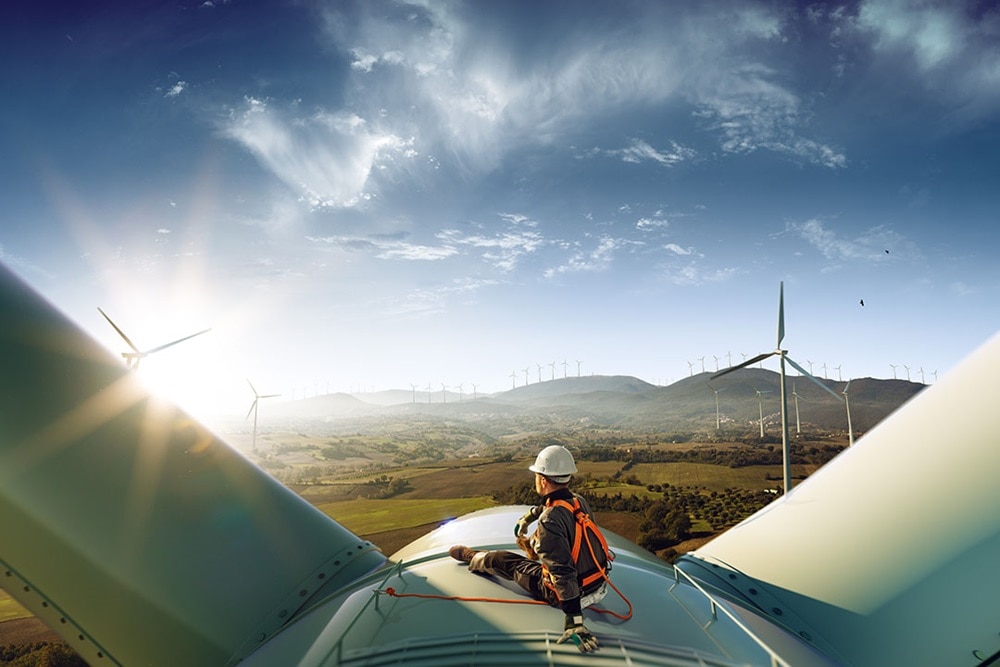Why an innovative electrical industry is more important than ever

The world is changing, and it is doing so faster and faster. In order to keep up with this pace and actively shape the changes, companies have to adapt.
Innovations are the key that opens the doors to change: to more efficiency, to more sustainability, to better living conditions for people. With innovative solutions for almost all areas of life, the electrical industry can provide important impetus for sustainable development – for housing, mobility, production and much more.
So much change, so many opportunities
As far as the eye can see, the world is changing. This is certainly not a new insight. After all, constant change is an elemental part of life. What is new, however, is the speed with which change is turning all areas of life upside down. While electricity took 46 years to reach a quarter of US citizens, the television needed only 26 years. The Internet had already reached this rate of adoption seven years after its introduction in 1991 – and Facebook after only four years.
Another 20 years have passed since then, and people everywhere are integrating innovations and products into their everyday lives. And they must, because change is omnipresent.
For example, in social developments such as continuing population growth or the demographic shifts of an aging society. According to forecasts by the United Nations, the world's population could grow to over 10 billion people by 2080. Most of these people will live in cities. The UN expects that by 2030, their number could be more than five billion, and by 2050 around 80 percent of the world's population should find their home in a city.
In addition, there are other formative developments such as technological progress or climate change. The fact that they are all interconnected and influence each other makes dealing with all these forms of change even more challenging.
At the same time, this complex, intricate interplay of a wide variety of megatrends opens up new possibilities. It is important to find and use the right synergy effects. The requirements of change – of society, technology, climate, etc. – also provide solutions for sustainable, long-term improvements. As a company, it is our job to find these solutions and translate them into effective innovations.
Challenge? Accepted!
Change and innovation go hand in hand. Both drive each other and therefore have the potential for real improvements. Of course, transformation and innovation remain a challenge. Because they raise questions that need to be answered as a company:
How can we find solutions within the company and create structures that do justice to the multi-layered change – and that in turn provide positive impetus for future changes?
How can our products and services help to steer change in the right direction – and thus truly make the world a better place for everyone?
Without innovation, the necessary answers cannot be found. And that means embracing change and its challenges.

Innovations. Shape. Change.
A lot is demanded of companies today. This is because they must deal with numerous changes of global significance that affect them in various ways. What connects all these developments is the search for sustainable solutions.
Circular business models are one of the answers to the demands of change. At the same time, they are a success factor for companies because they use scarce resources along the entire value chain more efficiently, because they save costs and because they bring more durable products to consumers. In addition to internal measures and strategies, creative innovations and meaningful networking with other companies are central starting points for achieving sustainable circularity for change.
Innovations – but in the right way
The term "innovation" today often seems like another marketing buzzword intended to sell new products in a crowded market. Anything that offers any improvements compared to the previous version, however small they may be, is termed innovative.
But real innovation means a fundamental change. This is not always fast, even if we almost expect it to be in this digital age. After all, an innovation does not become effective through the introduction of a new product or a completely new invention.

The significance of an innovation only becomes truly visible when it leads to a decisive change in behaviors and methods. Innovations therefore require foresight and a long-term perspective – with clearly defined goals.
The social, ecological, and technological changes that are already noticeable today will continue to influence life on our planet in a few decades' time: this applies to positive developments such as the growing share of renewable energies in electricity generation as well as to negative effects such as the progressive warming of the planet and the resulting climate crisis with heat, droughts and extreme weather events around the world.
The speed of change should not obscure the fact that innovation is more than a short sprint. It's a long-distance run that needs to be planned in advance.
Credibility and sustainability
For companies, there are numerous reasons why they should become innovative and sustainable. Legal requirements are certainly part of this, especially since they are becoming ever stricter due to the urgency of climate protection. The new EU climate protection package "Fit for 55", for example, has once again significantly increased the targets for reducing CO2 emissions so that the EU can still meet the major goal of climate neutrality by 2050 and the framework agreements of the Paris Climate Agreement.
In addition, connectivity to the market is a key driver of innovation. Perhaps the most important, overarching reason for innovation, however, is that innovations are the basis for the future viability of every company.
If you want to continue to shape the world with your products and services in the future, you must include the change in the world in your considerations and strategies – and accept it as a driving force for comprehensive innovations. The electrical industry has the opportunity to initiate sustainable change in almost all areas of life: Smart energy management systems, decentralized energy distribution for entire residential districts, efficient smart home applications or intelligent solutions for e-mobility are just a few examples where the electrical industry already offers functioning solutions for current – and future – changes in society, the environment and technology.
Like this, the industry can make a significant contribution to changing not only people's lives, but the world. Sustainability as an overarching goal begins with the search for meaningful innovations.
